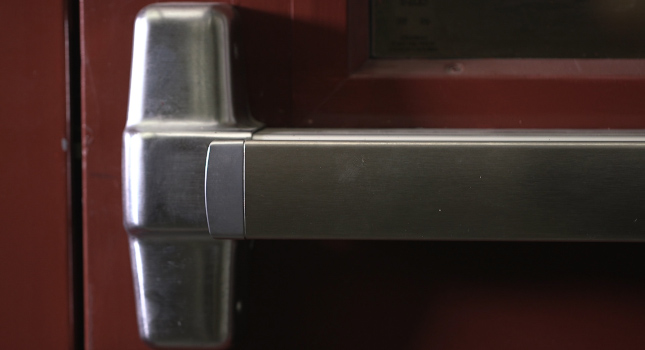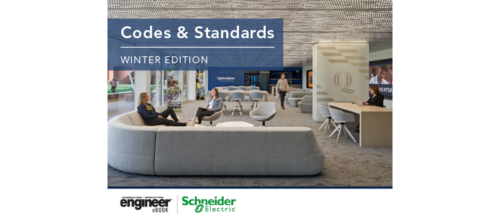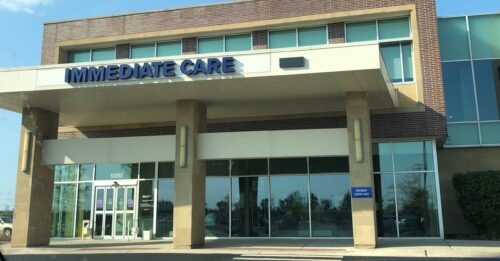A guide to upcoming changes in the 2024 edition of NFPA 101
Important changes in the 2024 edition of NFPA 101 include modular rooms, portable fire extinguishers, carbon monoxide detection and alternative care sites.
NFPA 101 insights
- The 2024 edition of NFPA 101 introduces changes that address emerging trends and challenges in building design and safety.
- The revised NFPA 101 places increased emphasis on occupant empowerment and early fire response, requiring fire extinguishers in new and existing assembly occupancies.
NFPA 101: Life Safety Code has long stood as one of the most widely used resources for protecting people and mitigating the impact of fire and related hazards. The code is updated every three years, so it is important to understand the 2024 edition of NFPA 101 as jurisdictions begin to work the code into their regulations. Ahead of implementation, it’s critical that engineers are aware of changes and additions contained in the new edition.
Modular rooms and sleep pods in NFPA 101
Whether an office building or airport is looking to add a private space to take a phone call, be used as a lactation station or provide sleeping arrangements, modular rooms have become more popular. A modular room is an occupiable, prefabricated structure consisting of walls and a ceiling. It may or may not have an integrated floor and integral electrical wiring, ventilation and furnishings. Modular rooms are limited to 100 square feet or less in area and 8 feet or less in height. Anything larger must be treated like any other portion of the building and comply with the applicable requirements from NFPA 101 and the building code.
A sleep pod is also an occupiable, prefabricated structure that might include integral electrical wiring, ventilation and furnishings. However, it is specifically designed and used for sleeping purposes. When installing sleep pods, it is important to consider how their addition impacts the occupancy classification of the existing space. Because they add sleeping accommodations, their use cannot be considered incidental per NFPA 101.

Figure 1: The 2024 edition of NFPA 101 has updated requirements for interior exit discharge. Courtesy: NFPA
For example, if an office building is adding sleeping pods, additional safeguards may be required because sleeping occupants are not expected in a business occupancy. These pods are 32 square feet or less in area, 8 feet or less in height, and 4 feet or less in width. Similar to modular rooms, if the sleeping pod is larger, it must comply with applicable requirements from NFPA 101 and the building code.
Both modular rooms and sleep pods must be listed and labeled in accordance with UL 962, Household and Commercial Furnishings. Careful consideration must be given to where these prefabricated rooms are installed. They cannot obstruct the required means of egress for the existing space. Additionally, they must be installed in accordance with the listing and the manufacturer’s instructions.
NFPA 101 changes to alcohol-based handrub (ABHR) dispensers
ABHR dispensers became increasingly popular during the pandemic, as the global crisis highlighted the need for them in a variety of occupancies. There are two major changes to ABHR dispensers in the 2024 edition of NFPA 101. The first is an increase in the amount of ABHR permitted and the second is the addition of spill containment and maintenance requirements. The updates clarified that these provisions do not apply to individual use containers that are 16.9 ounces or smaller in size.
It’s also important to note that the requirements for ABHR dispensers in health care and ambulatory health care occupancies did not change. The changes mentioned here only apply to occupancies, such as business, mercantile, educational and assembly buildings that require compliances with the provisions in Chapter 8.
The amount of ABHR solution permitted to be in use in fully sprinklered buildings has doubled. The previous limit was 10 gallons and is now up to 20 gallons that are permitted. There was also an increase in the allowable size of individual dispensers:
- In corridors and areas open to corridors: increased from 0.32 gallons to 0.53 gallons.
- In corridors and areas open to corridors in buildings protected throughout by sprinklers: increased from 0.32 gallons to 1.06 gallons
- In rooms or suites of rooms: Increased from 0.53 gallons to 1.06 gallons.
NFPA 101-2024 also adds requirements for spill containment and maintenance. Spill containment must be provided and kept clear of trash and ABHR solution. If any ABHR is spilled when refilling the dispensers, the spill must be cleaned up and removed as soon as refilling is complete.
NFPA 101 increases portable fire extinguishers
While many occupancy classifications required fire extinguishers per a building or fire code, they often were not a part of NFPA 101. Previous reasoning has been that NFPA 101 is primarily concerned with getting occupants out of the building, and therefore does not expect occupants to delay egress to try to extinguish a fire. However, in the 2024 edition of NFPA 101, both new and existing assembly occupancies now require portable fire extinguishers.
This change was based on findings from research studies, which identified that occupants will try to extinguish a fire in its early stages to avoid embarrassment, inconvenience and damage to the premises or property. The research also found that concerns for people, pets and possessions are strong drivers of behavior in the event of a fire. Studies have shown that people will almost always attempt to extinguish a fire if it’s small enough and they believe they can mitigate the hazard. If a fire extinguisher is not available, people typically use makeshift means to try to extinguish the fire, which is far less safe than using a portable extinguisher. Thus, it is important to give the public the tools necessary to be successful.
Carbon monoxide detection changes in NFPA 101
The scope of NFPA 101 has expanded over the years to include non fire-related emergencies. Previous editions required certain occupancies to have carbon monoxide detection, though it was often limited to residential occupancies.
A 2022 report from the Fire Protection Research Foundation, Carbon Monoxide Incidents: A Review of the Data Landscape, led to some recommended changes in the 2024 edition of NFPA. Notably, the 2024 edition requires carbon monoxide detectors in certain areas in existing educational and day care occupancies, as well as in new health care, ambulatory and detention and correctional occupancies.
NFPA 101 now covers inflatable amusement devices
The provisions will apply to inflatable amusement devices both inside and outside a structure, but not to one- and two-family dwellings. Typically, these devices are constructed and maintained in accordance with the ASTM F2374, Standard Practice for Design, Manufacture, Operation and Maintenance of Inflatable Amusement Devices.
There are two major concerns with such devices: anchoring and fire safety. ASTM F2374 primarily addresses the anchoring issue, although a variety of other topics are also covered. The requirements in NFPA 101 were added to address the issue of fire safety, including the materials of construction, the materials associated with electrical wiring and portable generators if they are to be provided. Key points are:
-
Devices must be constructed in accordance with manufacturer’s instructions and ASTM F2374.
-
Devices must be constructed of noncombustible materials or materials meeting the flame propagation criteria of Test Method 2 of NFPA 701, Standard Methods of Fire Tests for Flame Propagation of Textiles and Films.
-
Any electrical equipment associated with the device must comply with NFPA 70: National Electrical Code (NEC).
-
If a portable generator is to be provided, it must comply with NFPA 37: Standard for the Installation and Use of Stationary Combustion Engines and Gas Turbines and portable fire extinguishers must be in accordance with NFPA 10: Standard for Portable Fire Extinguishers must be provided.
NFPA 101 defines alternate care sites (ACS)
ACS changes were in response to the pandemic, when it became necessary for non health care facilities to serve as health care facilities during patient surges. Per the newly added definition, an ACS is any building, structure or portion thereof not currently being used for health care that is temporarily reoccupied, converted, constructed or relocated for health care use to provide additional capability for an affected community during urgent needs for increased capacity.
Newly created Annex expands the definition of ACS and provides the user with recommendations for how to establish and operate these facilities as temporary health care facilities. The information found in Annex D supports new language in Chapters 18 and 19, which permit ACS, provided they have an approved fire emergency plan and comply with approved alternate construction, design, protection, operational and occupancy classification requirements.
Annex D provides sections on the following:
-
Site assessments: Considerations of a site assessment include the number and type of patients supported, proximity to nearby hospitals, personnel staffing requirements, utility requirements, air filtration and handling capacities, safety features for emergency response and egress, staging of ambulances and parking.
-
Construction: Considerations include coordination of construction, items necessary to expedite construction related to design deliverables and product submittals, alternate means of occupant safety when compliance with health care facility requirements cannot be met, interim life safety measures for construction adjacent to occupied areas and authority having jurisdiction approval.
-
Operations and maintenance: Considerations include maintenance of life safety systems, fire watch, building services, operating features and inspection, testing and maintenance of fire protection systems.
-
Facilities decommissioning: Upon completion of use of ACS, added utilities to support ACS must be removed and the occupancy must be returned to original existing occupancy classification.
Interior exit discharge requirement changes
Typically, exits must terminate directly outside. However, that is not always possible or desirable. Prior editions of NFPA 101 had a couple of exceptions, one of which permitted up to 50% of the required exit enclosures and 50% of the capacity to discharge through the inside of a building.
The 2024 edition of NFPA 101 expands one of those conditions and allows up to 75% of the required number of exit enclosures and capacity to be permitted to discharge through the interior provided that:
-
The level of discharge is protected throughout with automatic sprinklers
-
The interior exit discharge only occurs in a vestibule or foyer that is separated from the remainder of the floor by one hour fire-resistance rated fire barriers (existing installations of wired glass in steel frames is permitted in lieu of the fire barriers)
-
The vestibule or foyer is not more than 10 feet from the exterior of the building and not more than 30 feet in length
-
The vestibule or foyer only serves as a means of egress and must exit directly to the outside.

Figure 2: An effective exit strategy is important when ensuring safety during a fire. Courtesy: NFPA
How NFPA 101 balances security and life safety
In the past, there has been a misconception that security and life safety are in opposition, in that when prioritizing life safety, security is overlooked and vice versa. Over the past few editions, changes have been made to address this perceived conflict between security and life safety.
The 2024 edition of NFPA 101 requires that emergency action plans consider the security features in place. This helps ensure both safety and security are considered when developing plans for emergency response. New and existing educational and day care occupancies added additional language, reiterating that both security and life safety need to be considered and documented in the emergency action plan.
The future of life safety code
The changes listed in this article are by no means exhaustive, but they do hopefully provide a helpful summary of key updates. NFPA 101 can be thought of as a living, breathing document that evolves alongside construction and operational trends. The changes made every three years are meant to create safer structures and environments as well as address new challenges, making it critical for engineers to stay up to date.
Do you have experience and expertise with the topics mentioned in this content? You should consider contributing to our CFE Media editorial team and getting the recognition you and your company deserve. Click here to start this process.




